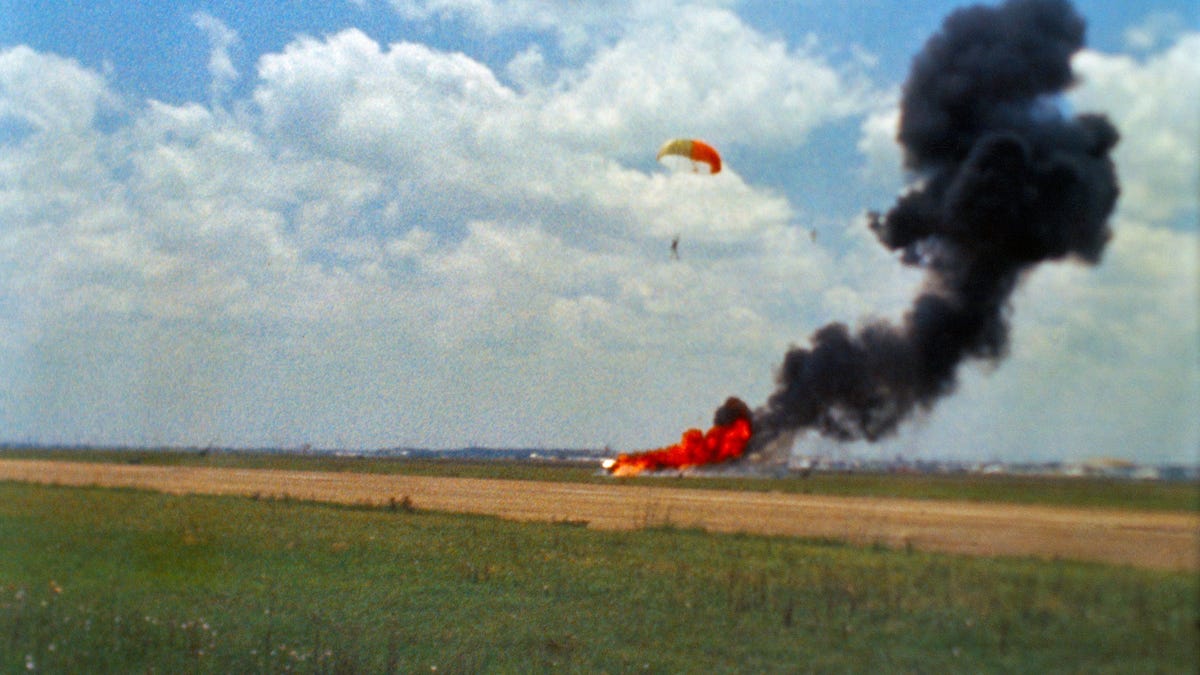His vision has inspired a whole new generation of pioneers of thought and form and opened the way for Citizen Scientists around the Globe. His work is emulated by cutting edge thinkers around the world. He is a thought leader and pioneer, breaking the bonds of stagnant archaic scientific models. His willingness to challenge the accepted norm has blazed a path for thousands of citizen explorers. He has a way of drilling down to the fundamental question that provokes the unexpected revelation."Stagnant archaic scientific models" — such as that the Moon is lifeless and always has been? Such as that numerology is worthless poppycock?
Hour 2 of Hoagland's "welcome back" interview on OSOM, hosted by the fragrant but prolix Laura London, was quite a mixture. The first topic was methane on Mars, and here Hoagland gave a decent and straightforward account of what it would mean if methane were found to be abundant, and what's been discovered so far. Then it was on to an assortment of speculations about solar system civilizations and similar non-facts. Hoagland kept promising us some dramatic revelations in an Apollo 11 anniversary show he's planning. As experience shows, Hoagland's promises and Hoagland's deliveries are horses of two different colors.
Jules Bergman was hung over
Almost all of the the second half of the hour was anecdotal, about his experiences with CBS News as a consultant/researcher with the Apollo production team. He re-told a story I've heard before, and it's seminal to an understanding of the origins of his hatred of NASA. Since he gave an over-discursive version (surprise, surprise) I'm going to paraphrase it rather than transcribe his exact words.
He says, correctly, that the general rule during Apollo was that the only person at Mission Control who could actually speak to the astronauts was the Capcom, who was himself an active-duty astronaut. However, as a PR stunt, an exception was planned for Apollo 15 at a time when the astronauts were not particularly busy, on the way back from Moon to Earth. It was arranged that they would conduct an actual press conference from space, and senior correspondents from the major TV networks, news agencies and newspapers would be allowed to ask questions directly, just as in a normal press conference. Hoagland was with the CBS-TV group as they waited for this event to begin. There was delay after delay, and finally their producer got on to NASA public affairs asking what the problem was. The answer they got was that the spacecraft was not yet visible from Goldstone.
Hoagland says he made a swift calculation with pencil and paper, and concluded that this could not be true because the mountains obstructing the view would have to have been 5,000 miles high. Much later he discovered that the true reason the press conference was held was that Jules Bergman, correspondent for ABC TV, was struggling with a killer hangover and was not in place. Hoagland says this was "a wake-up call" for him personally, being the first time that he realized NASA was not always honest.
I find that story a bit suspect, for a couple of reasons. First, the calculation he claims to have done on the back of an envelope is not at all an easy one to do. You'd need a great deal of information about the spacecraft's trajectory and a very good knowledge of geography (add to that the fact that Hoagland's incompetence at math is fairly well-known). Second, perhaps more telling, every Apollo mission timeline was planned and controlled to the second. If such a press conference was planned—and I have no reason to doubt that—it would have been approved by a whole bunch of people, written into the Flight Plan, and implemented like any other planned event. It's extremely hard to imagine that the Apollo 15 astronauts' time budget had enough slop to allow a significant delay.
So, to go back to the puffery I quoted at the top, perhaps Hoagland's "way of drilling down to the fundamental question" is better expressed as "a way of drilling down through the truth to a story that makes him look good."
Update: Hoagland's story falls apart
Thanks to very useful research by James Oberg (thanks Jim) we can see how well Hoagland's story syncs up with the documented facts. The answer is, not at all.
The Press conference, of course, appears in the flight plan. It shows that TV is acquired at M.E.T. 270:20 (very likely through Goldstone)note 1, and the conference is scheduled in the window 270:20-270:50. The annotated transcript shows that TV was acquired at 270:22:31, the conference actually began at 270:23:15 and ended 270:50:12. There is no extraordinary delay at all.
Moreover, it is not true that media correspondents spoke directly to the Apollo 15 astronauts. The questions were written and Capcom Karl Henize read them in order. Henize explained:
"The questions you will be asked in this news conference have been submitted by newsmen here at the Manned Spacecraft Center who've been covering the flight. Some of the questions they raised have been answered in your communications with - with Mission Control, but the public-at-large has not necessarily heard them. The questions are being read to you exactly as submitted by the newsmen, and in an order of priority specified by them."The only open question is whether Jules Bergman had a hangover that day. Bergman's been dead for 32 years so we can't ask him. It's more than possible—the bar at the Nassau Bay Hotel was responsible for endless naughtiness in the Apollo years. I know whereof I speak, or write, believe me.
I'm e-mailing this information to Hoagland, requesting his comments. Don't hold your breath.
Update 2: Wrong mission?
Just in case Hoagland's error was simply mis-remembering which mission this story relates to, I checked the records for Apollo 16 & 17 (there was no transearth presser on earlier missions)
Apollo 16: Planned M.E.T. 243:30-50 / Actual 243:25:30 Capcom Hank Hartsfield
Apollo 17: Planned M.E.T. 284:07-37 / Actual 281:27:19 Capcom Gordo Fullerton
=====================/ \======================
[1] CORRECTION: Not Goldstone but Madrid. If TV had been coming from Goldstone the vertical dashed line indicating TV coverage would have been to the left of the MSFN solid line. So Hoagland's story is wrong in another detail.


